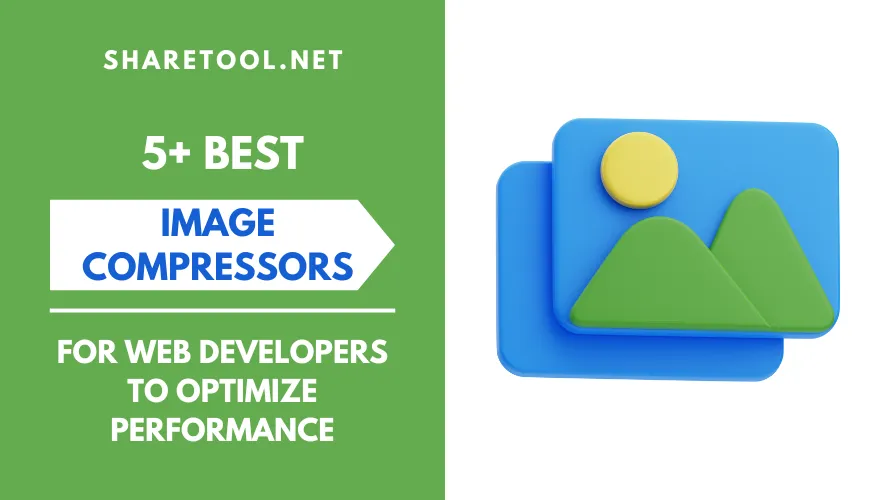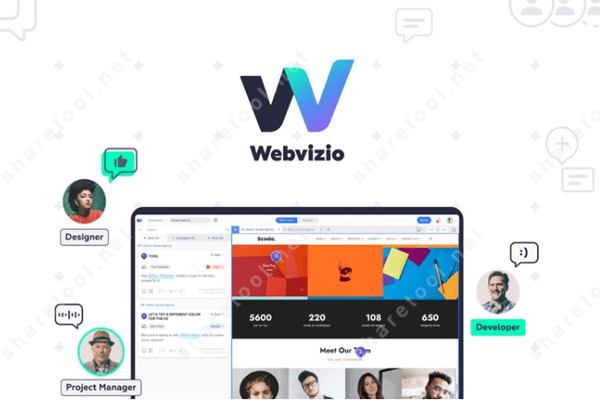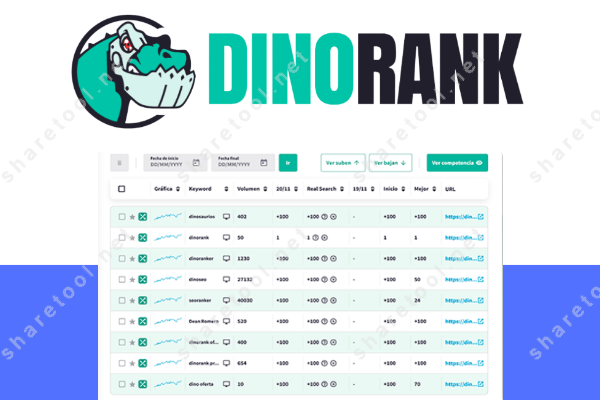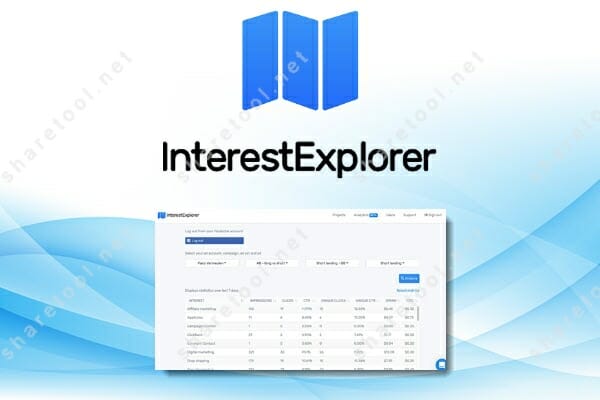5+ Best Image Compressors For Web Developers To Optimize Performance
Best Image Compressors are must-have tools for web developers who want to optimize website performance without sacrificing visual quality. In an era where every second of load time impacts SEO rankings, bounce rates, and user experience, large image files can quickly become a hidden barrier to success.
By reducing file sizes while maintaining clarity, image compressors help developers create faster, more efficient websites that not only please users but also meet Google’s Core Web Vitals standards. From online tools to advanced software integrations, the right solution can save hours of manual optimization and dramatically improve site speed.
In this guide, we’ll explore the 5+ Best Image Compressors for web developers, compare their features, and highlight which tools deliver the perfect balance of performance, quality, and workflow efficiency in 2025.
What Is Image Compressor Technology
An image compressor is a specialized tool that reduces the file size of digital images by removing redundant data while maintaining acceptable visual quality. This process works through two primary methods: lossy compression (which permanently removes some data) and lossless compression (which reorganizes data more efficiently without losing information).

Modern image compression uses algorithms to rewrite image files in a way that takes up less storage space, with compressed images loading faster than uncompressed images. The technology analyzes textures, patterns, and colors to determine the optimal compression strategy for each specific image.
For a typical 1000×1000 black and white image using 8 bits per pixel, the uncompressed file requires 8 million bits of storage. Effective compression can reduce this by 50-80% while maintaining visual quality that’s indistinguishable to the human eye.
5+ Best Image Compressor Tools – Comprehensive Analysis
Tinify (TinyPNG/TinyJPG) – Industry Gold Standard
Tinify stands out as the best image compressor software for professional use, offering intelligent compression algorithms that analyze each image individually.

Key Features:
- Compresses over 2 million JPEG, PNG, AVIF and WebP images daily
- Smart algorithm automatically selects optimal compression ratio
- API integration for developers
- WordPress plugin available
- Fastest compression times in comparative testing
Pros:
- Superior compression algorithms
- Batch processing capabilities
- Excellent API documentation
- Consistent results across image types
Cons:
- Limited free tier
- Requires account creation for advanced features
Performance: JPEG images compressed by 40-60% and PNG images by 50-80% with no visible quality loss
Best For: Professional photographers, web developers, businesses with high-volume image needs
Squoosh – Google’s Open-Source Champion
Squoosh processes all compression locally in your browser, ensuring images never leave your device, making it ideal for privacy-conscious users.

Key Features:
- Browser-based processing (no server upload)
- Real-time compression preview
- Support for next-gen formats (WebP, AVIF)
- Advanced codec options
- Side-by-side quality comparison
Pros:
- Zero privacy concerns
- Advanced format support
- Real-time preview
- No file size limits
Cons:
- Single image processing only
- Requires technical knowledge for optimal use
Performance: Excellent for single images, supports various compression formats
Best For: Privacy-focused users, developers experimenting with formats
ShortPixel – Comprehensive Optimization Platform
ShortPixel offers three compression levels – Lossy, Glossy, and Lossless, allowing precise control over the quality-size tradeoff.

Key Features:
- Three compression algorithms
- WebP and AVIF format conversion
- WordPress plugin integration
- Bulk processing up to 50 images
- URL-based image optimization
Pros:
- Multiple compression options
- Excellent WordPress integration
- Strong bulk processing
- Modern format support
Cons:
- Interface can be overwhelming for beginners
- Free tier limitations
Performance: Best overall compression ratios in comparative testing
Best For: WordPress users, e-commerce sites, content creators
ILoveIMG – All-in-One Image Toolkit
ILoveIMG allows users to choose multiple JPG, PNG or GIF images and compress them in seconds for free.

Key Features:
- Multi-format support
- Batch compression
- Additional image editing tools
- Cloud storage integration
- Mobile app availability
Pros:
- Complete image toolkit
- Mobile accessibility
- Cloud integration
- Affordable pricing
Cons:
- Ads in free version
- Less specialized than dedicated compressors
Performance: Good compression with added utility features
Best For: Users needing multiple image tools, mobile users
Fotor Image Compressor – Design-Focused Solution
Fotor‘s image compressor can reduce image sizes to specific targets like 50kb, 20kb, 100kb with customizable quality settings.

Key Features:
- Target file size compression
- Bulk processing up to 50 images
- Three quality levels
- Mobile app support
- Design tools integration
Pros:
- Precise file size control
- Strong mobile app
- Integrated design tools
- Good batch processing
Cons:
- Premium features required for full functionality
- Interface can be cluttered
Performance: Excellent for achieving specific file size targets
Best For: Social media managers, designers, mobile users
Comparison Table – Best Image Compressor Tools
| Tool Name | Key Features | Pricing | Best For |
|---|---|---|---|
| Tinify | Smart algorithms, API, WordPress plugin | $30/year | Professional photographers, developers |
| Squoosh | Browser-based, privacy-focused, next-gen formats | Free | Privacy-conscious users, single images |
| ShortPixel | Three compression levels, WordPress integration | $4.99+/month | WordPress users, e-commerce |
| ILoveIMG | All-in-one toolkit, mobile app | $6+/month | Multi-tool users |
| Fotor | Target file sizes, design integration | Free with limits | Social media, designers |
Best Free Image Compressor Options
For users seeking cost-effective solutions, several excellent free image compressor tools deliver professional results:
Top Free Options:
- Squoosh – Ultimate privacy with local processing
- Tinify Free Tier – 500 monthly compressions with professional algorithm
These free tools provide substantial value for small businesses, personal projects, and users with moderate compression needs.
Understanding Image Compression Formats
PNG Image Compressor Best Practices
PNG is the most efficient format for losslessly compressing text-based images, offering files 6.25x smaller than JPEG. PNG compression works best for:
- Images with transparency requirements
- Graphics with sharp edges and text
- Simple illustrations with limited colors
- Screenshots and user interface elements
JPG Image Compressor Optimization
JPEG compression analyzes textures, patterns and colors to apply optimal encoding strategy. JPG compression excels for:
- Photographic content
- Images with gradual color transitions
- High-resolution photography
- Content where slight quality loss is acceptable
WebP Image Compressor Advantages
WebP lossless images are 26% smaller than PNGs, and lossy WebP images are 25-34% smaller than JPEGs. WebP compression offers:
- Superior compression ratios
- Support for transparency
- Animation capabilities
- Modern browser compatibility
Step-by-Step Checklist: Choosing the Best Image Compressor
Assess Your Volume Needs
- Low volume (under 100 images/month): Free tools like Squoosh
- Medium volume (100-1000 images/month): Tinify free tier or ShortPixel
- High volume (1000+ images/month): Premium plans from Tinify, Kraken, or ShortPixel
Identify Required Formats
- Standard needs: JPG, PNG support sufficient
- Modern websites: WebP and AVIF support essential
- Specialized content: GIF, SVG support needed
Determine Quality Requirements
- Professional photography: Lossless or high-quality lossy compression
- Web content: Balanced compression with 70-80% quality settings
- Social media: Aggressive compression acceptable for faster loading
Evaluate Integration Needs
- WordPress sites: Choose tools with dedicated plugins
- Development projects: API access essential
- Design workflows: Integration with existing software
Consider Processing Speed
- Tinify offers the fastest compression times on average
- Batch processing capabilities reduce manual work
- Local processing (Squoosh) eliminates upload/download time
Budget Considerations
- Free tiers: Suitable for personal projects and small businesses
- Premium plans: Essential for professional and commercial use
- Enterprise solutions: Necessary for large-scale operations
Test Compression Results
- Compare output quality across different tools
- Measure actual file size reductions
- Verify browser compatibility for newer formats
AI Image Compressor: The Future of Optimization
Machine learning-based compression algorithms have been trained on over 10 million web images, assigning different bitrates to different image parts. AI-powered image compressors offer several advantages:
Advanced Features:
- Intelligent quality detection
- Content-aware compression
- Automatic format selection
- Predictive optimization
Leading AI Compressors:
- VanceAI Image Compressor
- Compression.ai
- Cloudinary’s AI optimization
These tools represent the cutting edge of compression technology, though traditional algorithms remain highly effective for most use cases.
PDF Image Compressor Considerations
ImageRecycle is the only compressor that offers support for PDF files, making it unique for users needing document optimization. PDF image compression involves:
- Compressing embedded images within PDF documents
- Maintaining document structure and text quality
- Balancing file size reduction with readability
- Preserving document formatting and layout
For PDF-specific needs, specialized tools like ImageRecycle or dedicated PDF optimization software provide better results than general image compressors.
Conclusion: Selecting Your Ideal Image Compression Solution
The best image compressor for your needs depends on volume requirements, quality standards, and technical integration needs. For most users, Tinify offers the optimal balance of compression quality, speed, and professional features, making it our top recommendation for the best image compressor software.
For budget-conscious users, Squoosh provides excellent free alternatives without sacrificing compression quality. Professional photographers and enterprises should consider premium solutions like Kraken.io or ShortPixel for advanced features and API integration.
Remember that effective image compression directly impacts website performance, user experience, and SEO rankings. Investing time in selecting the right compression tool and optimizing your workflow will pay dividends in improved site speed and user engagement.
Ready to optimize your images for superior performance? Visit Share Tool today to explore our comprehensive image optimization solutions and take your website’s performance to the next level.
- What Is Dropshipping And How Does It Work?
- Top 5+ Best AI Email Assistants To Increase Your Email Open Rates
- SpyFu Review – Best Competitor Keyword Research Tool For SEO
- 10+ Best Keyword Rank Tracking Tools For Small Businesses To Dominate Google Maps
- Top 5 Best Quetext Alternatives For Accurate Plagiarism Detection









